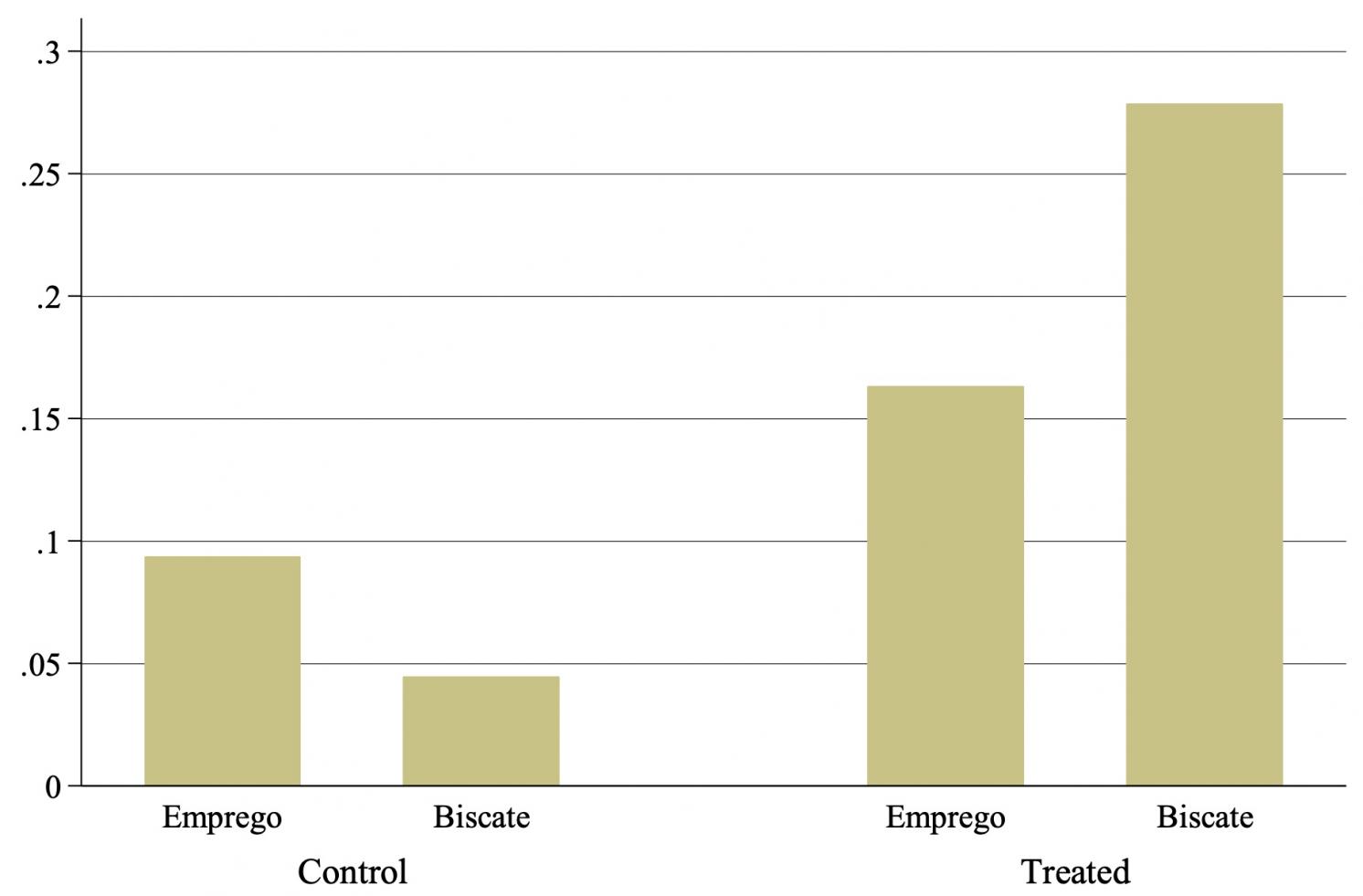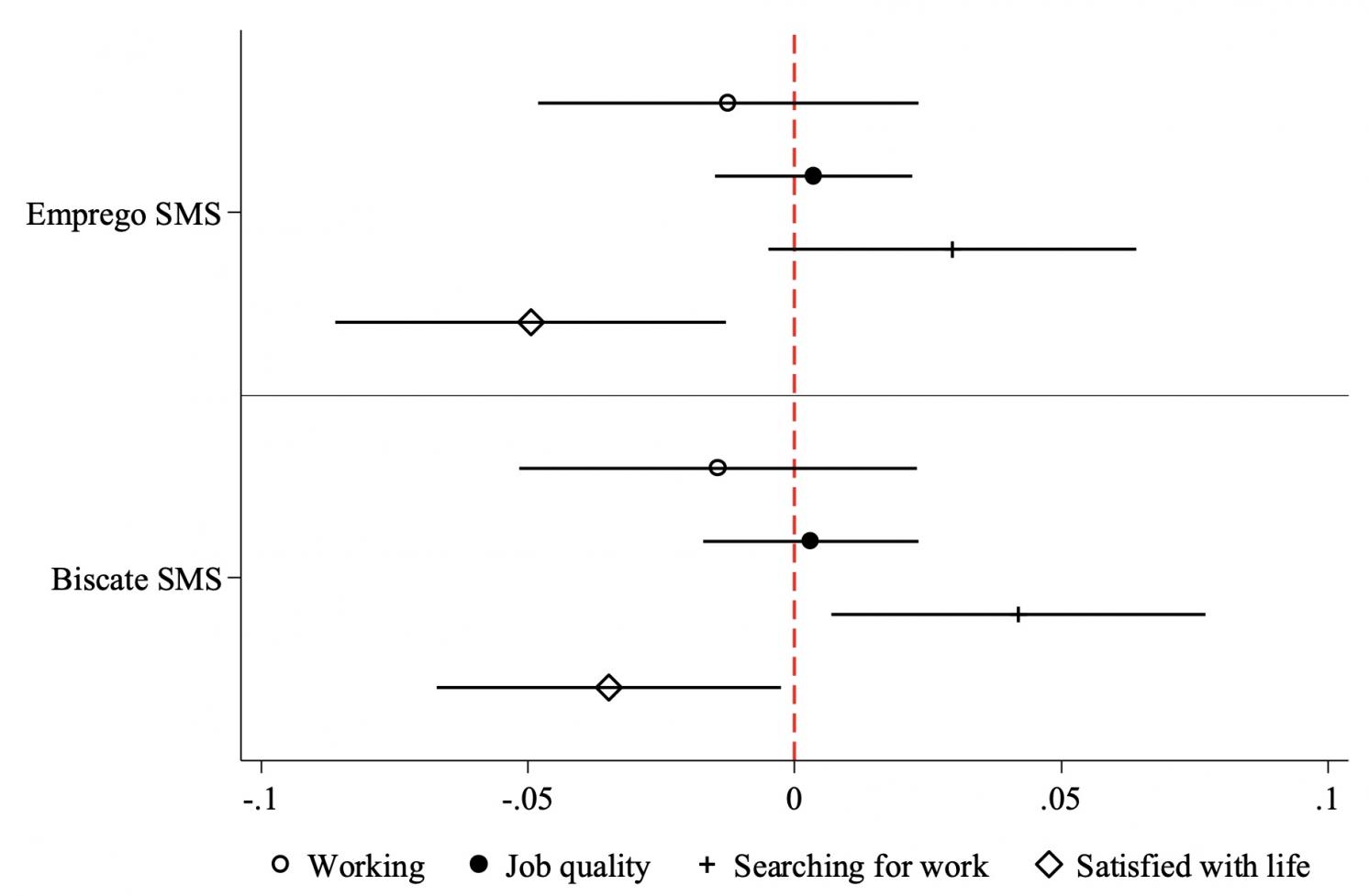Blog
Digital platforms and job search
Experimental evidence from Mozambique
Digital technologies can be deployed to improve job search, but their effectiveness in practice is disrupted. This column uses experimental data to investigate the effect of a digital job-matching platform on the labour outcomes of young people in Mozambique. The ‘treatment’ of a text message inviting people to join the platform encouraged uptake, but the platform itself did not have a significant effect on overall job outcomes for the sample. Nonetheless, for specific groups – namely, women with training for specific professions – the platform increased both hours and wages. This suggests digital technologies may aid the development of market niches, despite failing to benefit users in general.
The use of digital technologies such as the internet to find work has become almost ubiquitous in high-income countries. Yet the impact of these tools on headline labour market outcomes – such as unemployment – is not crystal-clear. For instance, in an early study for the US, Kroft and Pope found the rapid growth of jobs advertised on Craigslist made no difference to unemployment rates at the city-level. In lower-income countries, though, high rates of unemployment sometimes go hand in hand with many unfilled job vacancies. Might digital technologies help better match jobseekers with available jobs in these contexts?
Labour market policy tools
One explanation for the ‘puzzle of ineffective internet job search’ is that digital platforms such as online jobs boards do not address fundamental demand or supply constraints to employment. Individuals having difficulty in finding jobs online may be precisely those that struggle to find work regardless of how much or where they search. And in themselves, platforms rarely create many new jobs.
For these reasons, policies to address unemployment often go beyond improving job search, or what economists call the ‘jobs matching process’, toward other tools such as providing tax incentives or setting-up apprenticeship schemes.
In lower-income countries, particularly those in sub-Saharan African, this debate remains pertinent. High levels of both un- and under-employment are well-documented and have become even more worrying since the COVID-19 pandemic. This situation is regularly attributed to ‘fundamental’ market constraints, especially weak job creation, inspiring policies such as youth wage subsidies.
Even so, evidence suggests that high rates of unemployment in low-income countries often coincide with large numbers of unfilled jobs vacancies. So, alongside fundamental market challenges, this suggests frictions in the matching process are still material.
Testing online jobs platforms in Mozambique
A number of experiments have been conducted to evaluate the effectiveness of policies that reduce search costs, such as providing skills certificates or transport subsidies to jobs seekers (e.g. Carranza et al. 2020, Abebe et al. 2021). We contribute to this emerging field by investigating the effect on jobs outcomes of getting young people in Mozambique onto digital jobs matching platforms in our new paper.
As part of a school-to-work tracking survey of a large sample of graduates of technical and vocational educational training colleges, we sent SMS invitations to encourage randomly selected individuals to register on one of two different jobs platforms, aimed at alternative segments of the labour market. The platforms were: (1) Emprego, a conventional website to find formal jobs, where employers post vacancies and directly receive applications from registered users; and (2) Biscate, a platform to find manual freelancers for specific tasks or services (e.g. plumbing, hairdressing), where prospective clients browse relevant registered workers in their chosen location and occupation.
After sending out the SMS invitations to register, we followed students in both the ‘treatment’ and ‘control groups’ (who did not receive any invitation) for approximately nine months, collecting data on their labour market status once every quarter. Comparing outcomes between individuals who did and did not receive registration invitations provides a causal estimate of the contribution of the different platforms, known as an ‘intent-to-treat effect’.
Results
Our first result is that the SMS invitations were effective – they led to higher rates of registration on the platforms among recipients compared to non-recipients. Figure 1 shows that in the control group, just under 10% of individuals registered on the Emprego platform; but over 15% of those receiving the SMS invitation did so. The Biscate nudge was even more effective. Less than 5% of individuals in the control group registered on the platform compared to nearly 30% in the treatment group, a difference of about 23 percentage points.

At the same time, when we consider the sample as whole, we see no evidence that use of the platforms led to better work outcomes. Across a wide range of variables – including employment status, job quality, hours worked, and wage earnings – we find no systematic effects that can be uniquely attributed to the platforms. That is, in and of themselves, use of the platforms did not appear to improve users’ labour market outcomes. These findings are summarised in Figure 2, which plots estimated differences in outcomes for individuals receiving the different SMS messages versus the controls, including the 95% confidence interval.
However, two moderate general effects do emerge. First, a slightly larger proportion of treated individuals report to be searching for work. And given there is no difference in actual employment rates, this would suggest platform usage encourages more job search. But, second, we see lower life satisfaction among the treated individuals. We speculate that this could be a consequence of higher unmet aspirations associated with the intervention.
Despite these null results, there are also some more encouraging findings. When we restrict attention to women, and particularly those who have studied courses associated with specific industrial or manual jobs (e.g. electricians), use of the Biscate platform does appear to improve outcomes. Here we find the platform led to a roughly 1/3 increase in hours worked as well as significantly higher earnings.

Interpretation
Two main conclusions can be drawn from our study. On the one hand, jobs matching platforms are unlikely to represent a general panacea for un(der)employment in low-income Africa, at least where the demand for new workers is limited. Indeed, it merits note that the experiment coincided with the first year of the COVID-19 pandemic, which provoked a significant slow-down in economic activity across the country. In other words, where labour demand is weak and few (new) job posts are being created, the overall contribution of enhanced matching will be limited – i.e. fundamentals do indeed matter.
On the other hand, our findings demonstrate the potential for digital platforms to support and possibly even grow specific market niches, where search frictions are particularly high. In this sense, promotion of bespoke platforms (e.g. for female handy-workers) is worth exploring.
This article was originally published in VoxEU. Read the original article.
The views expressed in this piece are those of the author(s), and do not necessarily reflect the views of the Institute or the United Nations University, nor the programme/project donors.
 Join the network
Join the network
